|
Greeff
Genealogy Journal
Journal of the Greeff and related families, No
11, July 2008.
Editor: Francois Greeff.
Index of previous editions
Home
About 80% of the Greeff clan lives in South Africa, and most of them understand Afrikaans and English. Roughly 10% of the clan lives in Germany, and they speak German, and understand English. Another 10%, more or less, live in America, where English has not been spoken since the revolution. Because the Greeff Genealogy Journal is also read in New Zealand, Australia, Cuba and Qatar we try to write most of it in English.
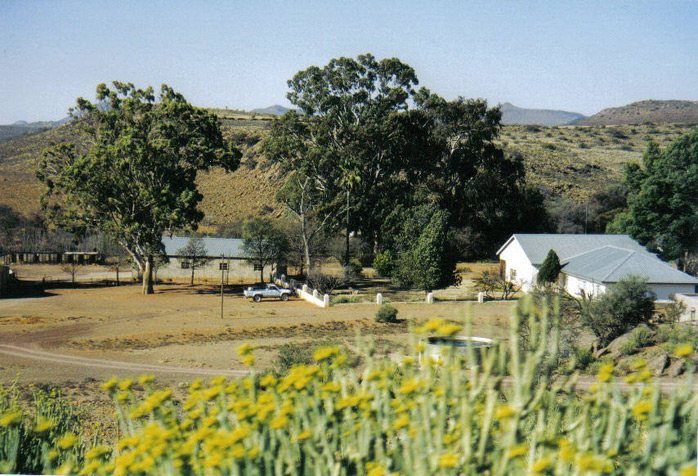
Spes Bona, the home of Basie and Rina Greeff at Hofmeyr, South Africa. Put the mouse cursor on the picture to see Basie riding Night. (Thanks to Rina Greeff for the photos)
Contents
Important Notices
1.To go to our web site, please search just one word, Greeff, on Google, and then click on our link (www.Greeff.info). It helps to get our page higher up in the search results, which makes it easier for newcomers to find our site.
2. New telephone number for Francois Greeff : 0044 20 8123 4224 (UK 020 8123 4224). To submit articles to the Greeff Genealogy Journal, email Greeff@Greeff.info.
Greeff Genealogy
Our latest research news: The Greeff in Germany Project.
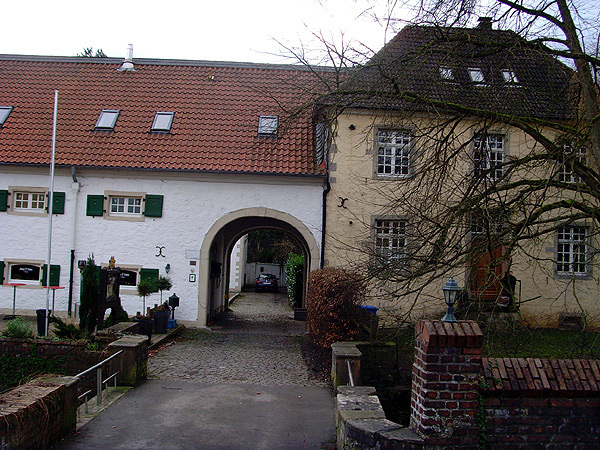
The Greeff in Germany project stems from the fact that virtually all members of the Greeff family, world wide, can trace their ancestors back to Germany. There are two methods of study devoted to finding the links between the German Family and those members outside of Germany. The first is to trace back the genaealogy of those Greeff people outside of Germany, and the second method is to research all that is known of the family in Germany, in the hope of learning more about the people who emigrated from Germany.
The most important source of information about the family in Germany is a rare and out of print book, "Geschichte der Familie Greeff aus der Huckenbach" (History of the Family Greeff of the Huckenbach). The book was researched and written by Professor Victor Bredt, who also wrote other genealogical works. The book was published in Germany in the beginning of 1941, during the Second World War.
In an effort to make the information in the book accessible to all members of the family Francois Greeff and Viljoen Greeff are working together to prepare a new volume for publication in a year or two's time. The new publication will contain three sections: The first section will be an exact copy of the original German text, in Gothic Script. The second section will contain a translation of the text into English, and the third section will update the information in the original book from 1941 to 2008, and add photos of old documents, people, buildings and gravestones.
Oliver Greeff, who lives in Germany, recently sent in his genealogy and some photos of the "Knight's Manor" at Düssel, which is one of the important estates in the Greeff family (In Afrikaans "Rittergut" translates to Ridder, and to 'goed', as in 'Landgoed'). Victor Bredt gives an account of the history of the manor in the "Geschichte der Familie Greeff aus der Huckenbach". A translation of his account, by Viljoen Greeff, is given below. The photos are all from Oliver Greeff.
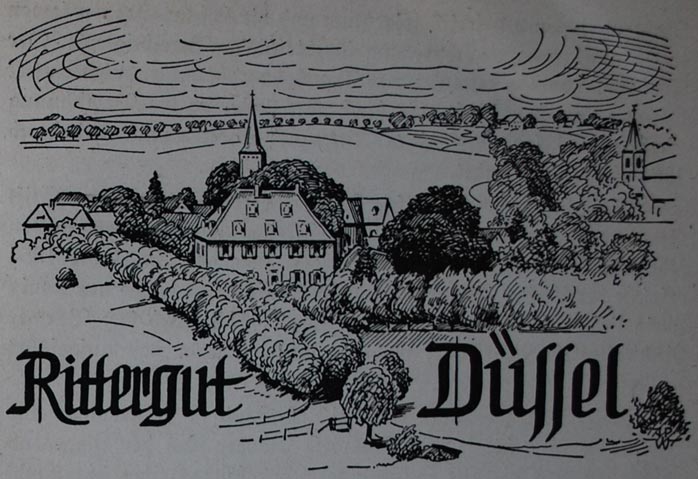
The original Chapter heading from "Geschichte der Familie Greeff aus der Huckenbach" (p121)
Düssel was a tax-exempted, aristocratic, Rittergut or manor of the duchy of Berg, with parliamentary privilege. Its owner enjoyed the privileges of these holdings, exemption from tax plus a seat and voting right at the Bergische Landtag or regional parliament. In return he had to serve the Duke in case of war, mounted and in armour. After the emergence of standing armies this obligation fell into oblivion, but at the time the knights were still called up for special duties. In terms of the law of Berg only aristocrats could own such a manor, but later this guideline was breached more and more.
The farmers on Düssel held their land in feudal tenure, and received their impropriation from the manorial court. For this they had to make certain contributions to the manor, and in particular the tenure had to be bought by the heir at the death of the holder by a Kurmut (death duty), consisting of the best horse. These obligations were reiterated in a proclamation dated 1699.
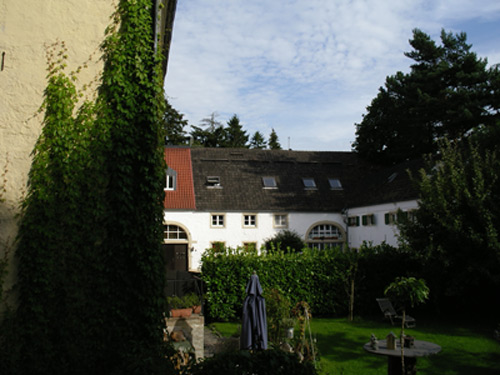 Under Napoleon all these rights and duties were abrogated and Düssel became a property in terms of the common law, the tax exemption in particular fell away. The farmsteads also became freehold properties and the contributions for tenure fell away, without any compensation for those who had previously benefited by them. The Bergische Landtag ceased to exist under Napoleon, therefore also parliamentary privileges conferred by property. The appellation “tax-exempt, aristocratic manor with parliamentary privilege” persisted although it no longer had meaning, and was officially used as late as 1864. Under Napoleon all these rights and duties were abrogated and Düssel became a property in terms of the common law, the tax exemption in particular fell away. The farmsteads also became freehold properties and the contributions for tenure fell away, without any compensation for those who had previously benefited by them. The Bergische Landtag ceased to exist under Napoleon, therefore also parliamentary privileges conferred by property. The appellation “tax-exempt, aristocratic manor with parliamentary privilege” persisted although it no longer had meaning, and was officially used as late as 1864.
Düssel had a Catholic priest’s office, with the diocese of St. Gereon in Köln having the advowson. The colonnaded basilica was one of the earliest Romanesque church buildings in the vicinity. In the year 1854 reconstruction began and it left very little of the original building. A further reconstruction followed in 1888 by the Barmen architect G.A. Fischer, which included rebuilding the tower.
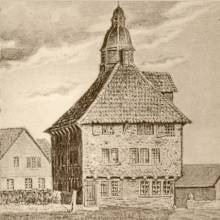 Quite early, at any rate before 1612, a Reformed congregation came into being in Düssel, which many farmers in the vicinity joined and which withstood all the storms of the time of persecution. The first church building was an old Lower Saxon house, clad with shingles, with very small windows, the roof overhanging and crowned with a tower-like structure. A new church was built in 1874. The old building was transformed into a dwelling and still exists in this form. The Church books of the Reformed congregation date back to 1655. Quite early, at any rate before 1612, a Reformed congregation came into being in Düssel, which many farmers in the vicinity joined and which withstood all the storms of the time of persecution. The first church building was an old Lower Saxon house, clad with shingles, with very small windows, the roof overhanging and crowned with a tower-like structure. A new church was built in 1874. The old building was transformed into a dwelling and still exists in this form. The Church books of the Reformed congregation date back to 1655.
Düssel fell under the Bergische administration in Solingen, namely under the judicial district “Vier Capellen” (Four Chapels) so called after the four chapels Düssel, Gruiten, Schöller, and Sonnborn. The court sat in Gräfrath. From 1698 Düssel belonged to the barony of Schöller, which was established by the territorial lord for the Baron of Schöller and was then transferred to the Baron of Schaesberg. From then on the adjudication of small matters concerning Düssel rested with the owner of the House of Schöller, and larger matters with the territorial lord.
The oldest known owners of Düssel were the Lords of Düssel, of which the first named is Gerhard von Düssel, Commander of the Order of St. John in Horst on the Lippe in 1298. This family can be followed until about 1500, by times they also held the office of Bergische Hereditary Marshal. Then the house came into the possession of a family from Diepenbruch called Rousteche, from the nobility of the Duchy of Jülich. From them the house came into the possession of Baron von Gertzen, hereditary Marshal of Jülich.
In later times the condition that such manors could only be sold to aristocrats was not strictly kept. So it came about that in 1699 Privy Councillor Hettermann of Churpfalz, member of the highest government authority in Düsseldorf, became the owner of Düssel. After him the property changed hands many times, until it was acquired in 1784 by Johann Peter Bredt of Barmen(1756-1819), who was married to Charlotte Wortmann (1762-1816). After him Düssel was inherited by his son Johann Peter Bredt (1782-1852) and his wife Charlotte Siebel (1785-1864). Johann Peter Bredt was the father-in-law of Johann Peter Greeff-Bredt.
When the widow of Johann Peter Bredt, born Siebel on 17 January 1864, died, the manor Düssel, together with other Bredt fixed property in Barmen, was sold at auction by notary Flink on 4 August 1864 at the Plum Hotel zum Clevischen Hof at the Old Market in Barmen. The announcement stated that the sale had to do with a division of assets on the basis of an agreement reached on 6 May 1864 and a family council resolution of the royal Justice of the Peace dated May 10th. The concerned parties were listed as the eldest daughter of Joh. Peter Bredt, the widow Julie de Landas, then the son Emil Bredt, further on behalf of the daughter Sophie Greeff-Bredt (already deceased the previous year) the widower Joh. Peter Greeff-Bredt with his children. The area of Düssel was given as 385 morgen 116 roods, the valuation at 60890 Thaler, 14 Groschen, 8 Pfennige.
It seems that the auction protocol has not been preserved. It is only shown that Düssel was acquired by Joh. Peter Greeff (branch Greeff-Bredt VIII), who was designated in the announcement as “economics expert, formerly of Barmen, now residing at Poppelsdorf at Bonn”. The dwelling of Joh. Peter Bredt in Barmen was acquired by the municipality and set up as a local court. The properties on Karl Street were acquired by Victor L. Th. Bredt.
It could appear remarkable that Joh. Peter Greeff could attain such a valuable property at the age of 25, while still without heirs. He was already engaged to his cousin Pauline Greeff (branch Greeff-Rittershaus II.) and the two fathers joined forces to give their children a property on which the son could pursue his profession as agriculturist. They were married immediately after gaining the property, but only a year and a half later Joh. Peter Greeff lost his life in service of the homeland. The widow retained the property until it became clear that it was operating at a loss. The fathers Peter and Carl Greeff then took over the estate and came to an agreement that the longest-living of the two would retain the estate and compensate the family of the other. Peter Greeff-Bredt died in 1875, and so the estate fell to Carl Greeff, who possessed it until his death in 1893. The manor then went to his son Rudolf Greeff, who did much to maintain and improve it. Early in 1913 the estate was taken over by his son Werner Greeff. Today it is a patrimony of 310 morgen with its own hunting and fishing rights.
Geschichte der Familie Greeff aus der Huckenbach
Update of Information from 1941 to 2008
The book by Victor Bredt has been translated into English, and is in the final stages of editing. The translated text will be put on the Greeff Family web site so that everyone can read it. The purpose of putting it on the web page before publishing it in book form is so that:
1. The whole family can comment on it, and help to correct any mistakes in the translation.
2. The whole family can add to it so that the book is brought up to date.
I appeal to all people, regardless of what their surnames may be, to contact me if they are related to anyone in the book.
I ask that members of the book send me their family trees, so that these can be added to the tree on the web site. So far more than 450 people from the book have been added into the tree on the Greeff Family Website, and Lee Greeff in Pretoria is working very hard to add all the rest.
To see the family tree as it is now:
1. Go to www.Greeff.info (Home Page)
2. Click on Search
3. Click next to "All Families" and Select "Greeff in Germany"
4. Click enter.
This method can be used to search for a specific person in the family too. When you see a person's personal record, try to click on 'Ancestors' or on 'Descendants'. It helps to get a good picture of the family.
A descendants' chart (Ahnentafel) can be seen at:
http://www.greeff.info/tng01/register.php?personID=I130&tree=GreeffinGermany&generations=14
If you have any material that should be included in the update of this book, please contact me. In particular I am looking for:
1. New family trees (births, marriages and deaths).
2. Copies of old documents
3. Photos of old family Paintings
4. Photos or copies of old paper photographs
5. Photos of family graves
6. Photos of any land or buildings owned by Greeff
7. Photos of ALL members of the family, living or dead.
My contact details are:
Francois Greeff
36 Aston Road
London
AW20 8BE
Phone: 0044 20 8123 4224
Mobile 0044 79 6372 2345
Email: Greeff@Greeff.info
|
Thank you very much...
Last month's contributions to research:
The success and growth of the Greeff family tree is the consequence of hundreds of people from all over the world who each contribute to one common goal. During June alone all the people in the table contributed to the pool of Greeff knowledge in some way, and they all helped to build the Greeff family tree. I thank them for all that they manage to achieve when their efforts are added together.
Andre Greeff |
Hennie Greeff, Johannesburg |
Maureen de Villiers |
Andrew Kok, Durbanville |
Jaco Greeff, Pretoria |
Melinda Greeff |
Ann Tiran |
Jan Greeff |
Natanja Greeff |
Anne Clarkson |
Janet Melville |
Peet Greeff |
Annemarie Folkus |
Jo Schneider, Texas |
Rina Greeff |
Barend Venter |
Lee Greeff |
Seween Bosman |
Caspar Greeff |
Leslie & Ilse-Mari Forbes |
Shawn Brookes |
Celia Blewer, New York |
Llewellyn Greeff |
Talon Greeff, USA |
Corrie Greeff, Oudtshoorn |
Louis Francois Greeff, Pretoria |
Tiffany Smith Hunter, USA |
Desmond Greeff |
Lucas Rinken |
Ute Greeff, Germany |
Dirk Greeff, Cuba |
Lucille Van Loggerenberg |
Viljoen Greeff |
Eileen & Marty Russell |
Marius Greeff |
VJ and Fred Greeff |
Gerda Pieterse |
Martie du Toit |
|
My apologies and gratitude to all the people whose names I have inadvertently omitted from the list. During May and June my computer broke down and I lost much time and information, and many emails.
I thank several people and sources for the photos and articles in this month's Journal. They are:
Rina Greeff
Oliver Greeff
Annatjie Tiran
Alta Griffiths
Annemarie Folkus
Natanja Greeff
Viljoen Greeff
Matthys H Greeff
Matthys Greeff
Johan Greeff, Stellenbosch
Andre Greeff
Jan Greeff
Facebook.com
http://de.wikipedia.org/wiki/D%C3%BCssel_(W%C3%BClfrath)
Bredt, Victor. 1941. Geschichte der Familie Greeff aus der Huckenbach.
Wie is Ek
Rina Greeff, gebore Anna Hendrina Badenhorst. Boervrou en digter.
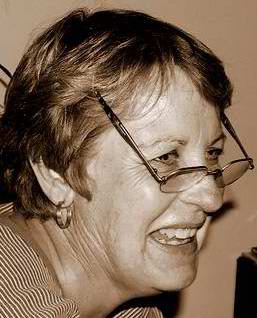
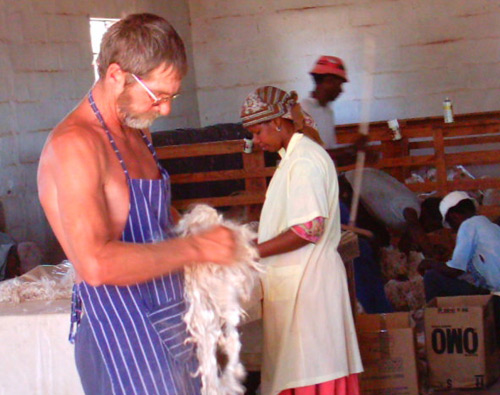 Lank, lank gelede “…in the merry, merry month of…”.., nee, dit was toe nie Mei nie, maar in Jannewarie, die bloedsweet, hittige eerste maand van die jaar se ses-en-twintigste dag op die Karoodorpie, Colesberg, wat ek my eerste asem geskrou het toe ek hierdie wêreld vir die eerste keer moes aanskou… (En skrou vandag steeds oor al die hartseer en ellende in dié ou wêreld van ons…) Lank, lank gelede “…in the merry, merry month of…”.., nee, dit was toe nie Mei nie, maar in Jannewarie, die bloedsweet, hittige eerste maand van die jaar se ses-en-twintigste dag op die Karoodorpie, Colesberg, wat ek my eerste asem geskrou het toe ek hierdie wêreld vir die eerste keer moes aanskou… (En skrou vandag steeds oor al die hartseer en ellende in dié ou wêreld van ons…)
Vir dié geskree het ek darem pampiere gekry: gedoop op die 9de Maart 1952 in die Colesberg NG Kerk deur my ouers, Matthews Marnix Badenhorst en Hester Johanna Sophia van Zyl van die plaas Raasfontein, distrik Colesberg.
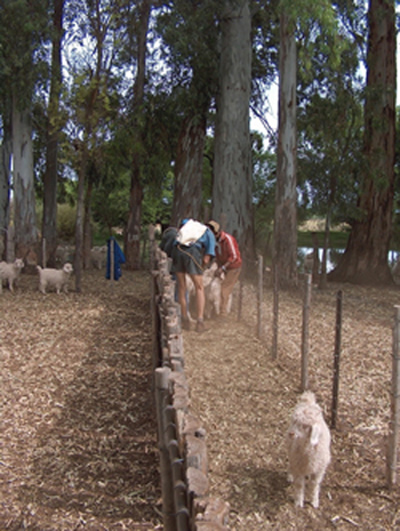 My laerskooljare is deurgebring op Skukuza in die Nasionale Krugerwildtuin, waar my stiefpa, David Owen Stegmann, asook my ma werksaam was. In my st. 8-jaar verhuis ons van Skukuza na Port Elizabeth waar ek dan aan die Hoërskool DF Malberbe in 1969 matriluleer. My laerskooljare is deurgebring op Skukuza in die Nasionale Krugerwildtuin, waar my stiefpa, David Owen Stegmann, asook my ma werksaam was. In my st. 8-jaar verhuis ons van Skukuza na Port Elizabeth waar ek dan aan die Hoërskool DF Malberbe in 1969 matriluleer.
Ek ontmoet my toekomstige eggenoot, Basie Greeff (eintlik is hy Johannes Willem Greeff, maar niemand weet wie hierdie mens met hierdie naam is nie), aan die Opleidingskollege Graaff-Reinet waar ons dan ook as onderwysers aan die einde van 1972 kwalifiseer. Ek gee onderwys by die Laerskool Moorreesburg, terwyl Basie aan die Opleidingskollege Paarl sy OD LO-diploma in 1973 daar verwerf.
En toe Kimberley toe in Januarie 1974: wonderlike eerstes-van-vele se jare: in daardie tydperk verloof geraak, getroud, eerste huis gekoop, twee seunskinders gekry (Paul 12 Okt 1977 en Chris 13 Des 1979) en toe…, toe word ons koshuisouers by Diamantveld Koshuis, met Basie LO- en sportonderwyser by Hoërskool Diamantveld.
Gedurende 1982 verhuis ons na Grahamstad, waar Basie onderwys gee by die Hoërskool PJ Olivier , en ons weer ook as koshuisouers optree. Ons derde seuntjie, Hannes (05-09-1982) word hier gebore…., maar hy was net vir 4 jaar aan ons geleen: op daardie pragtige, bekkige ouderdom (30-09-1986) het die Vader hom weer kom haal, en ons verslae en stukkend agtergelaat…
In Junie 1983 verhuis ons na Port Elizabeth, gaan bly op ‘n kleinhoewe te Little Chelsea, net buite die Baai, met al die voordele van ‘n amper-plaas én die stad se geriewe ook nog daarby. Basie gee onderwys aan die Hoërskool Framesby en ek begin weer, na Hannes se dood, ook onderwys gee.
Maar ‘n man met ‘n droom is ‘n moeilike man: Basie se hartsbegeerte was van kindsbeen af om eendag te gaan boer en in 1995 groet ons twee die onderwys finaal en raak plaasjapies, skaap-en bokboere, eers in die Cradock-Hofmeyer-distrik en vanaf 2006 in die Jansenville-distrik.
Wat op aarde doen ‘n vroumens-mens, wat nie ‘n boerin is nie, op ‘n plaas om haar besig én uit die kwaad (én uit die boer se hare) te hou? Ek ontdek die wonderlike wëreld van “crafts”: alles en enigiets wat daar is, probeer ek en toets uit, tot selfs hekel, en brei (yuk!), en inlê en jêm kook en broodbak en…ens…. Maar die Lister-enjin loop net saans vir ‘n rukkie, en ek ontdek toe ook verf, skilder, teken en na sewe saans, die Internet….!
Maar soms, so nou en dan, kom die seer van jare terug se ou klein kissie weer ‘n mens se lewe onderstebo gooi… en in daardie tyd het ek begin rympies maak, rym rympies om my gedagtes te orden, amper te dissiplineer. Ek glo steeds vandag dat die neerskryf van al daardie stukkende, swaar en seer gevoelens binne-in jou, een van die beste terapetiese metodes is wat daar kan wees om weer te kan mensword. Dis asof jy die kwaad uit jou lyf uit kan wegskryf. En dis maar hoe dié skryfgogga sy lekker vasbyt by my gekry het!
Gedurende 2007 ontdek ek ook ‘n webblad vir die bevordering van “Kreatiewe Afrikaans” nl. Woes.co.za, en daar gaat ek toe…., puur plesier!
Twee van my gedigte, nl Sjee ons vidag en Kinderspeletjies is opgeneem in 'n bundel wat in samewerking met ander digters saamgestel is. Die bundel se naam is: Boksemdais: 'n hele kabundel verse.
Hierdie bundel was op die 9de Julie vanjaar by die Volksblad Kunstefees te Bloemfontein bekendgestel waartydens van die gedigte deur drie woordkunstenaars voorgelees was. Meer inligting is te kry by: http://boksemdais.googlepages.com Navrae kan gerig word aan digklub@gmail.com
“Sjee ons vidag…” is geskryf kort nadat die kindertoelae ingestel was. Die gedig wys die hartseerkant van dié “grant”-geld (soos dit by ons hier op die platteland bekend gestaan het), met drank wat daarmee aangekoop word en wat dan veral ook tot vrouemishandeling lei.
Sjee ons vidag …
Jirre, grant my vidag my pay
solat ek wee ’n vol botteltjie ka’ kry
solat Langjan langes my, nie op my,
hêwin oppie earth kan kry.
Jirre, grant ôk lat vannie pay
ganoeg sjeld sal ka’ oorbly
solat Kleinjan ôk ’n nuwe broek kry
solat hy ophou tjank en klae by my.
Jirre, dis mossie broek by Fing se shop;
ag, en somma ôk so ’n stukkietjie drop,
enne, maybe ôk so ’n vlenterkie vleis
solattie leë pot wee ka’ koek innie huis.
Dankie, Jirre, daa kommie pay wên;
dankie, Jirre, dankie: amen, ymên!
(... Ag Jirre, sorrie, ma ek moet ôk vra,
Jirre, dissie lat ek somme vi nikssie kla:
Jirre, maak my se Langjan se hanne sag
solat my bek nie wee’ so skief-skief lag.)
En, ons eerste kleindogtertjie, Mia, moet haar opwagting in Oktober 2008 maak, en dié toekomstige oupa en ouma kan nie meer wag nie…, maar let wel, ek gaan níé booties brei nie! Sal maar eerder vir haar gediggies skryf:
Boeppensie
Boeppensie met ‘n kleine mensie
en die lewe lag!
Boeppensie met ‘n kleine mensie…
ag, ek kan nie meer wag!
Verby is die siek en die naar,
die lyf se verandering word aanvaar.
Die fladderings word skop en trap;
swaar opstaan en sit: dis g’n grap!
Wat gaan dit wees…, wie gee om?
Die vreugde maak ons almal stom.
Wat gáán dit wees…? Wie op aarde gee tog om?!
Daar’s ‘n nuwe baba aan die kom!
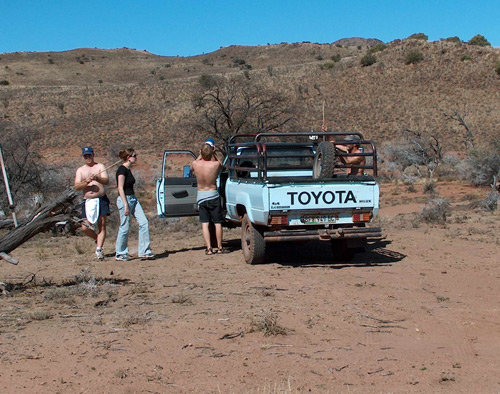 14½ weke 14½ weke
‘n Stukkie hemel
het die oues gesien…
swart op wit
(of was dit
dalk andersom?):
‘n hartjie
op die skerm
dompedie-dompedie-dom;
wat wys
‘n nuwe lewetjie
is aan die kom;
‘n kleine mensie
wat vir ons sê:
“Hallo,
die pit
is hier,
veilig in Mamma se magie!
Sien julle in die mooiste maand
as die lenteblomme blom;
dit is dan die tyd
wat ek na julle wêreld toe kom…”
En die pappa
en die mamma lag
van plesier
en die oupa en die ouma
kan nie meer wag
om die pienk
óf die blou
styf
teen die hart
vas te kan hou!
( Ons wéét darem al “die pit” is ‘n meisiekind en sy gaan Mia genoem word…:
Snik-snik sê oumagrootjie Hes:
“En ek dog dan sy gaan Hester’tjie
Johanna’tjie Sophia’tjie heet!”
en kerm ouma Rina oor die foon:
“Ek dog sy gaan Anna’tjie
Hendrina’tjie heet…”
maar die kinners die lag
en sê: “Ons is van ‘n nuwe geslag!”
Sug…,
eendag, oudag
is hulle dalk nog spyt
oor die wegsmyt
van ‘n familienaam;
maar wat…, ék verkies dan ook
my noem bo my doop se naam!
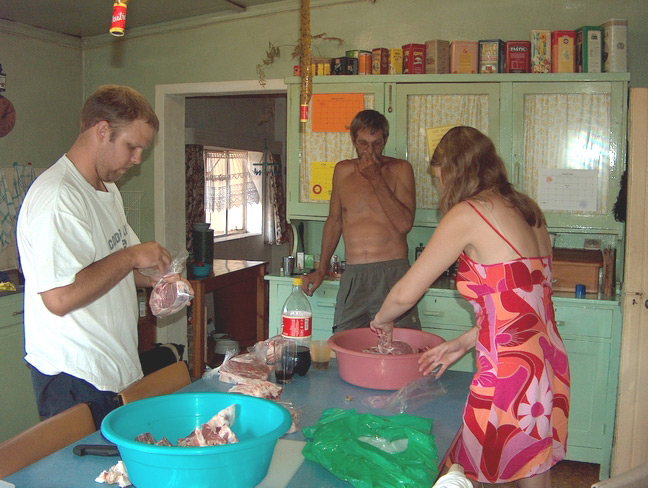
Paul and Chanell packing mutton into plastic bags for freezing, a normal part of farm life. The object above Paul's head is part of a scented glue strip that catches flies.
Another hangs to the right of the door.
Letters and Correspondence
To join the Greeff Correspondence Circle send an email to GREEFF-request@rootsweb.com with just the one word, subscribe, as subject and body of the message. In Afrikaans the Greeff Correspondence Circle is known as "Die Greeff Kuiernet" because it is a forum for all the clan to visit each other and stay in touch, worldwide.
In a letter from Ferdie van Wyk I learned about a genealogical tour to Germany. The purpose of the tour is to conduct genealogical research in Germany. The tour is being organised by the Northern Transvaal branch of the genealogical Society of South Africa. The tour organiser is Ellen Harmse. Her email address is eharmse@mweb.co.za.
The tour will take place in September 2009. Prior arrangements will be made for experts to help members of the team with research and translation in Germany. The entire two will be structured around the needs of its individual members. Each participant is asked to nominate three cities at which the tour should call. All in all, it seems like a very worthwhile outing. I think it is important that somebody go along on the tour to represent the Greeff family interests. All the research that has been done so far points clearly to one fact: every single Greeff person in the world seems to have his or her origins in Germany. All of us have a vested interest in the research that can be done on this tour.
This matter is urgent. We must find a delegate to attend the tour immediately. If you are interested in taking part in this tour please contact me as soon as possible. My e-mail address is Greeff@Greeff.info.
Francois Greeff.
*********************
THE GREEFF POSTCARD.
Annemarie Folkus
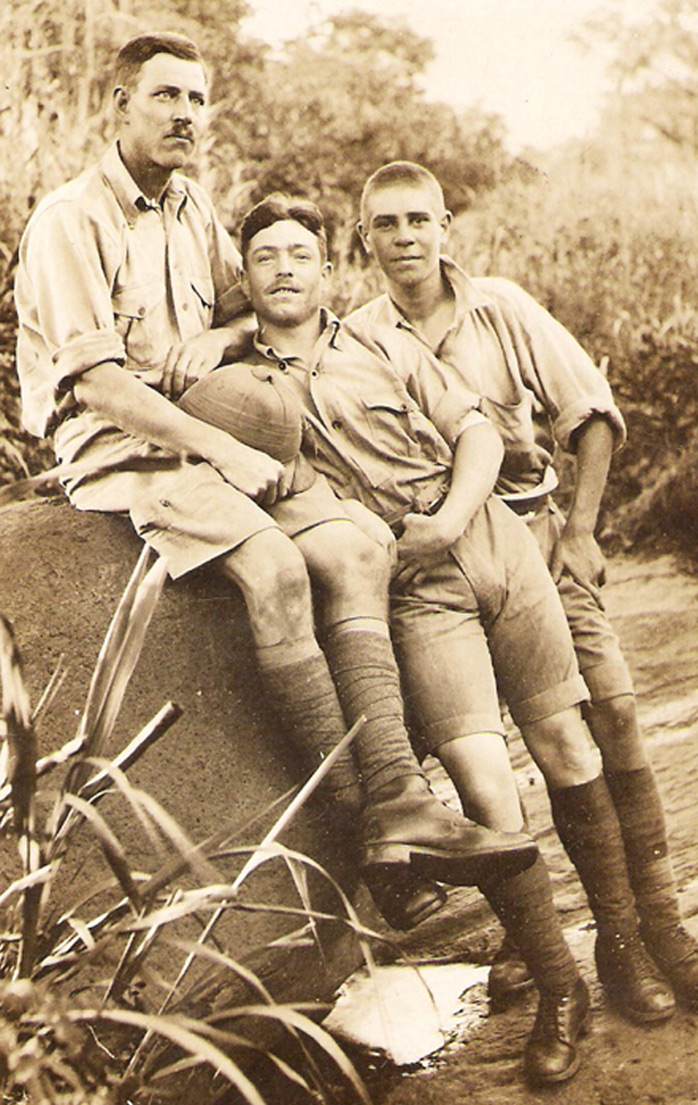
How does a Greeff postcard end up in the Folkus family? That was the question I asked myself when I received the postcard from my husband's cousin several times removed, Avis Venter. The postcard has a photo of three young men in khaki uniforms, and a short letter in broken English on the back, that had been written by S. J. Greeff. On the third of December 2006 I decided to make an enquiry on the S.A. Gen e-mail list, but I received no response to this enquiry.
Six months later, on the 21st of May 2007, out of the blue, I received an e-mail from Francois Greeff who said that someone had forwarded my enquiry to him. He asked that I scan the postcard and send an image of both sides to him so that he could put it on the Greeff family webpage for all the Greeff family to see and respond to. I was pleasantly surprised when Francois wrote to me a week later and suggested that I look at the Greeff family webpage to see the images that I had sent him. Not only was the postcard on the Greeff family web site but all my Folkus family information and the pedigree that I sent him with there too. Seeing my name and my postcard up there on the Internet made me feel very important!
Francois put some serious thought into the matter of the postcard. Francois reasoned that the style of the photograph, together with tropical uniforms, probably indicated that the photograph had been taken during the First World War in German East Africa. He suggested that I write to the South African Defence Force archives to make an enquiry about S. J. Greeff. I had pretty much decided that SJ stood for Stephanus Johannes, which is a pretty common combination of names in the Greeff family. The military archives sent me the records of Stephen John Greeff. Feeling despondent, I sent the record to Francois. He was quite fed up because the archives had not managed to find the right record. It had, after all, taken them seven months to respond to my e-mail.
During those seven months I'd been searching the web site of the South African national archives. I searched for combinations of surnames. I searched for Greeff and Folkus. I searched for Greeff and each of the surnames that occurred in the Folkus family tree. I found the estate file of Jurie Hendrik Greeff, with surviving spouse Johanna Aletta Greeff, born Murphy. I asked Annelie Els to take some photographs of the documents in the estate files for me. The death notice showed that their first child's name was Stephanus Jacobus Greeff, born 18 March 1899. By coincidence, the record of his baptism was in the file too. In the baptism record of another member of the family, Cornelius Johannes Murphy appeared as a witness. I recognized his name as being a step great grandfather in the Folkus family. The trail was getting hot!
The military record of Stephen John Greeff listed his mother is Mrs J. Joubert. It took a long time, but eventually the name rang a bell with me. I had seen the names Greeff and Joubert together somewhere. I went back to the National Archives website and searched again. My hunch paid off, in spades. It turned out that Jurie Hendrik Greeff's surviving spouse, Johanna Aletta Greeff, born Murphy, was divorced from Joshua Stephen Joubert! Stephen John, it appeared, was the anglicised version of Stephanus Jacobus.
I compared his father's death notice to his military record. The death notice showed that he had been born on 18 March 1899. His military record showed his age is 19 years on the 19th of August 1917, a close match. The real key to do identifying the writer of the postcard turned out to be his mother, Johanna Joubert, formerly Greeff, born Johanna Aletta Murphy. It became clear that the postcard had been written to her father, Cornelius Johannes Murphy. On his death the postcard was passed down into the hands of Avis Venter, whose great grandmother was married to Hendrik Folkens (or Folkus), an ancestor of my husband. When Avis found out that I was researching the Folkus family she mailed the postcard to me. That the postcard ended up with me at all is pretty amazing, because Avis and I are quite distantly related, because her great grandfather is my husband's great grandfather:
Hendrik FOLKENS x Margaretha Johanna Sophia VAN WYNGAARDT (Margaretha Johanna Sophia VAN WYNGAARDT xx Cornelius Johannes MURPHY, who is “Oupa” in the postcard.)
b3. Margaretha Magdalena Maria FOLKUS *17/9/1887 x Jacobus Fredrik AUSTIN
c3. Margaretha Magdalena Maria AUSTIN x Petrus Cecilius GERLAG
d4. Avis GERLAG x VENTER
b4. Petrus Johannes FOLKUS *28/5/1890 x Johanna Helena Petronella NEL. They are my husband’s grandparents.
The entire postcard solution was also dependent on the fact that Margaretha Johanna Sophia VAN WYNGAARDT married twice, and that her second husband ("Oupa" Murphy) married twice, and that his daughter (Johanna Aletta Murphy) married twice (x Greeff xx Joubert). Without these complex family relationships various peices of the puzzle would never have fallen into place.
It took more than a year and for me to establish the identity of the writer of the postcard, but I did it with the help of Francois, who acted as my mentor. I doubt that I would have solved the problem without his help. Two things became clear to me: never give up, and be flexible in your thinking. If you work long enough and hard enough, eventually you will solve most problems.
http://www.greeff.info/tng01/getperson.php?personID=I2289&tree=GreeffMainTree
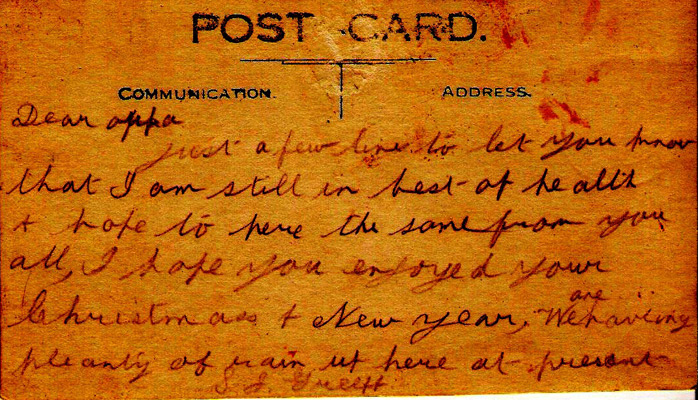
Greeff Farms
A regular column by Natanja Greeff
Matthys Greeff. Who's who?
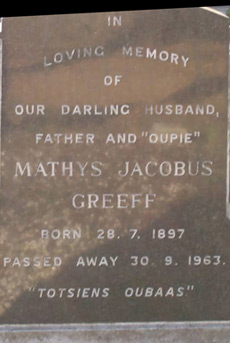 I recently, while doing research on the web, came across the inventory of the estate of one Matthys Greeff, drawn up in 1780. Matthys being a family name, and the names of parents being excluded, I wasn’t sure which Matthys he was or where he fitted into the picture, so I went back into the records to try and wrap my head around the matter. I then thought to myself that I am probably not the only one who has been struggling to come to grips with the matter of the Mathysses, so I have decided to share with you how I have set them apart for my purposes by drawing up a rough chronology in relation to Matthias Greeff. It is an attempt to put some flesh on the bones of these people, rather than just looking at them as names. I hope this summary is of use to others too. I describe only the earliest Matthysses in the family, but the four photos illustrate that the name has been kept in the family right up to the present day. I recently, while doing research on the web, came across the inventory of the estate of one Matthys Greeff, drawn up in 1780. Matthys being a family name, and the names of parents being excluded, I wasn’t sure which Matthys he was or where he fitted into the picture, so I went back into the records to try and wrap my head around the matter. I then thought to myself that I am probably not the only one who has been struggling to come to grips with the matter of the Mathysses, so I have decided to share with you how I have set them apart for my purposes by drawing up a rough chronology in relation to Matthias Greeff. It is an attempt to put some flesh on the bones of these people, rather than just looking at them as names. I hope this summary is of use to others too. I describe only the earliest Matthysses in the family, but the four photos illustrate that the name has been kept in the family right up to the present day.
Matthias Greeff and Susanna Claasen had their first child, Matthys, in 1687. It was this Matthys who farmed at Driefontein as of 1704. (Le Roux)
Matthys(son of Matthias) married Sara Coetsee on 7 December 1710 and had Matthys (let’s call him Matthys II), their only child, in 1711. (http://www.greeff.info/tng01/getperson.php?personID=I62&tree=GreeffMainTree)
Matthys (son of Matthias) died somewhere around 1712, according to Jean and Willem Le Roux. Other sources are unclear and state merely that it was before 1718. He would have been approximately 26 -30 years old at the time of his death. Matthias and his son thus died around about the same time.
When Sara died in 1718, this left Matthys II (grandson of Matthias), at the age of 7, an orphan. Sara’s parents, Dirk Coetzee and Sara van der Schulp, took him in and raised him as their own. (Newton-King in Worden, 2007, p330)
It was at this point that Driefontein was sold to Jacques Pienaar.
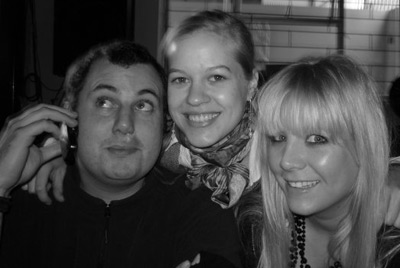 [ A quick aside for dramatic “Huisgenoot” effect: Matthys II had a cousin, Gerrit Coetzee (his mother’s brother’s son), who was who was sentenced to death by drowning in 1733 for sodomy of a neighbour’s horse… But I digress…(Newton-King in Worden, 2007, p311)] [ A quick aside for dramatic “Huisgenoot” effect: Matthys II had a cousin, Gerrit Coetzee (his mother’s brother’s son), who was who was sentenced to death by drowning in 1733 for sodomy of a neighbour’s horse… But I digress…(Newton-King in Worden, 2007, p311)]
So, Matthys II (grandson of Matthias) was taken in by his maternal grandparents and stood to inherit thousands of guilders when he came of age. (Newton-King in Worden, 2007, p315). (Farm ownership to be established)
Matthys II married Susanna van den Heever in 1736, when Matthys II was 25. They had 10 children of which the first was born in 1737 named Matthys (We’ll call him Matthys III, great-grandson of Matthias). Matthys III did not have any children. (http://www.greeff.info/tng01/getperson.php?personID=I60&tree=GreeffMainTree and http://www.greeff.info/tng01/getperson.php?personID=I73&tree=GreeffMainTree)
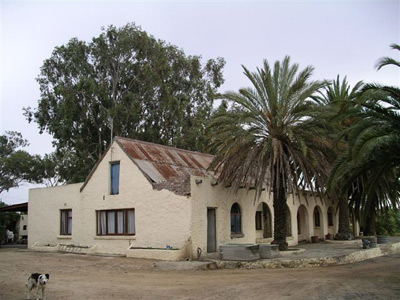 Matthys II had another son named Juriaan Hendrik. He married Maria Magdalena Joubert and they named their first son, born 1766, Matthys Johannes. This Matthys is then the great-great grandson of Matthias. He appears to have died early, and in 1784 Juriaan and Maria named their last child Matthys Johannes as well (great-great grandson of Matthias). (http://www.greeff.info/tng01/getperson.php?personID=I58&tree=GreeffMainTree) Matthys II had another son named Juriaan Hendrik. He married Maria Magdalena Joubert and they named their first son, born 1766, Matthys Johannes. This Matthys is then the great-great grandson of Matthias. He appears to have died early, and in 1784 Juriaan and Maria named their last child Matthys Johannes as well (great-great grandson of Matthias). (http://www.greeff.info/tng01/getperson.php?personID=I58&tree=GreeffMainTree)
Another son of Matthys II and Susanna van den Heever, by the name of Hendrik (married to Beatrix Lategan) named his eighth child Matthys Pieter(born 1779). Matthys Pieter was thus the great-great grandson of Matthias.
( http://www.greeff.info/tng01/getperson.php?personID=I99&tree=GreeffMainTree)
Matthys II’s 6th child, Francois Petrus Greeff (who married Johanna Elizabeth De Villiers) named his first son, born 1782, Matthys Johannes. This Matthys Johannes was also a great-great grandson of Matthias. (http://www.greeff.info/tng01/getperson.php?personID=I347&tree=GreeffMainTree)
I went through all the above, only to realise that the Matthys I was looking for- the one who died in 1780 - was not in this line of Matthys’s but in fact in the following line:
Matthys IV (as I will call the Matthys who died in 1780) was also a grandson of Matthias. His father was Hendrik (the brother of Matthys I) and his mother was Susanna van der Hoeven in 1719, and farmed at De Hoogecraal (Thomas Kloof, Tijgerbergen). (http://www.greeff.info/tng01/getperson.php?personID=I375&tree=GreeffMainTree)
Matthys IV was born in 1730 and married Anna Elizabeth Carstens in 1765 . They had five children. Matthys IV grandson of Matthias and son of Hendrik) died in 1780 (aged 50), leaving one property (at the Mosselbanks River, Malmesbury District?? Name of farm still to be established), which was divided between his 5 children, who were all still minors at the time. He also had a loan farm at De Bott Rivier, named De Draaj. (http://www.greeff.info/tng01/getperson.php?personID=I382&tree=GreeffMainTree)
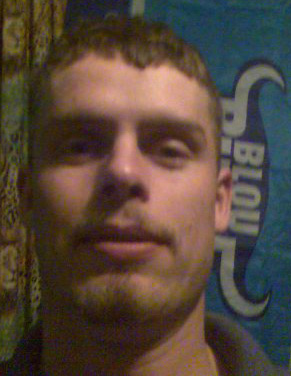 Of course there were many Matthys Greeffs thereafter but, as far as I am able to tell, these were the main sons named Matthys during the Greeff family’s first hundred years in South Africa up until around about 1780. Of course there were many Matthys Greeffs thereafter but, as far as I am able to tell, these were the main sons named Matthys during the Greeff family’s first hundred years in South Africa up until around about 1780.
In summary:
Thus, put simply, Matthias had 1 son named Matthys. He had 2 grandsons named Matthys (one was the son of Matthys; the other, the son of Hendrik). From grandson Matthys (son of Matthys) Matthias had 1 great-grandson named Matthys. From great-grandsons, Juriaan Hendrik, Hendrik, and Francois Petrus, Matthias had great-great grandsons, Matthys Johannes, Matthys Pieter, and another Matthys Johannes respectively.
SOURCES:
1. Newton-King, S. Contingent Lives. Historical Studies Department, University of Cape Town. Cape Town, 2007
2.
Le Roux, J.G & W.G. Die Oorspronklike Plase van die Wellington Distrik.
http://www.agrisa.info/assets/dynamic/86/files/07_2-000_hoofstuk_2__die_oorspronklike_plase.rtf
3. www.greeff.info
Vacancies, Jobs and Volunteers
Research positions in the Greeff Family Research.
1. Paid Work
I have decided to offer several part time jobs to scholars, housewives and retired people in South Africa. I will pay all applicants One Rand for every photo they add to the Greeff Family Tree. The work is dead easy, and all you need is a computer, broadband and a bit of common sense. I will show you how to attach, at first, your own photos to your family records on the Greeff website. After that I will send you more photos from the thousands of records I hold on my computer. The aim is to get the entire Greeff family tree supported by photos. To see how absolutely lovely a tree can be with nice photos, just click on these links:
http://www.greeff.info/tng01/pedigree.php?personID=I4&tree=PedigreeAlisanGreeff
http://www.greeff.info/tng01/pedigree.php?personID=I2&tree=GreeffKwartierstaat
http://www.greeff.info/tng01/pedigree.php?personID=I11&tree=ASGreeff
http://www.greeff.info/tng01/pedigree.php?personID=I89&tree=Lichtenburgstam
http://www.greeff.info/tng01/pedigree.php?personID=I6&tree=PedigreeNMGreeff
Please email Francois Greeff at Greeff@Greeff.info if you want your branch of the tree to look the same!
2. Volunteer Researcher to visit Germany
A group of people from South Africa will be visiting Germany in September 2009, as part of an organised Family History Research Tour, offered by the Northern Transvaal branch of the Genealogical Society of South Africa. I will personally pay the membership fees for each Greeff volunteer who joins the tour to become a member of the branch for a full year. The tour will be organised to accommodate the individual needs of the participants, and experts in Germany will assist in research and with translation. Arrangements will be made in advance to notify the appropriate research facilities of information and documents that will be needed. At least one volunteer, from any part of the world, is urgently needed to represent the Greeff family in this group. Ideally, three or four representatives would be best, so that different people can focus on different research areas, each of which is a big and important task. I can immediately think of Four major areas that need to be researched in Germany:
1. Matthias Greeff and his ancestors
2. Friedrich Greeff and his ancestors
3. Hugo Greeff and the ancestors of the Greeff family in America
4. The Greeff family in Germany generally - finding and contacting living Greeff people, photographing Greeff graves, church records, and and Greeff documents from archival repositories in Germany.
It makes much sense for us to try to include a descendant of Matthias Greeff, a descendant of Friedrich Greeff, and a descendant of Hugo Greeff.
This excusion offers a pleasant holiday in Germany, and is ideal for retired people.
Please let me know if you wish to be included in this research team in September 2009 (Greeff@Greeff.info).
Serious Genealogy
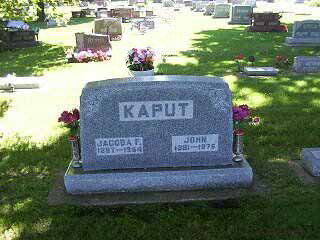
Our Second Birthday
An overview of the past year.
The Greeff Family Web Site came into existence at the beginning of July 2006. This month we celebrate our second year of existence.
During the past year several new developments took place. The first of these was the birth of the Greeff Genealogy Journal which is now at its 11th edition. The Journal has proved to be a very successful medium of communication. Not only is it a good medium of communication to all members of of the family and to the general genealogical community, but it also serves as a conduit for information from all over the world to reach the Greeff family web site.
The Greeff Genealogy Journal caused a series of Greeff biographies to be created. The "Who am I" series is extremely important, because it preserves an accurate picture of what people were like for future generations of Greeff. Right now is always a very good time to write down your father's life story, and that of your grandfather, and your own life story. These life stories are the backbone of the heritage we preserve for our children's children.
A further major advance during the past year was the decision to hold the global Greeff Family Reunion on the Wild Coast in December 2010 (See http://www.greeff.info/tng01/GGJ9-Mei2008.php#seven). The reunion will be held on the Wild Coast, at Arendsnes, Chinsa, South Africa, and the sooner you book your place the better. To book your place e-mail Louis Greeff at: louis@imaginet.co.za
A small weekend Greeff gathering will be held annually at the same place. Every year an informal Greeff gathering will be held on the 19th of May, in such a way that the 19th is included in a long weekend. The first of these informal gatherings will be at Arendsnes, from 16 to 19 May 2009. To book, contact Louis Greeff at louis@imaginet.co.za. We are trying to arrange a similar gathering in Europe on the same date, hopefully at Moosburg on the Bodensee, in Switzerland, the home where Andreas Greeff farms today. The details still have to be arranged with Andreas.
During the past year the Facebook Group, GREEFF FAMILY TREE, was created, and it has been hugely successful in bringing together several hundred members of the Greeff family from all over the world. I suppose that the biggest achievement for the past year was the fact that Greeff research overflowed the boundaries of South Africa, where we started, and went international in a very successful manner. Without the internet and the Greeff Family Web Site it would never have happened.
During the past year the entire Greeff family stood together and contributed funds into one central pool, and that made it possible for Natanja Greeff to attend Cape Town University to do a research Masters degree on the pioneer generations of the Greeff family in South Africa, and the farms they occupied. This joint effort is no small feat, because it enables serious and structured research about our family.
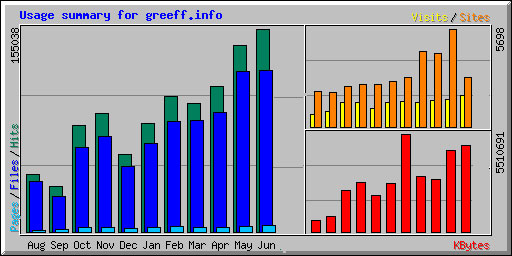 During the latter part of the last year the Greeff DNA project got under way. Members of the Greeff family in South Africa, Switzerland, America, and England have sent in their DNA samples, and we are waiting for the results to come back from the laboratory. This project is vitally important, because it helps us to understand how the various branches of the Greeff family, right around the world, are related to each other. It also helps us to understand our medical history, so that we are better equipped to prevent and to deal with genetically carried ilnesses, like Alzheimers, diabetes, heart disease, mental illness, and certain kinds of cancer. During the latter part of the last year the Greeff DNA project got under way. Members of the Greeff family in South Africa, Switzerland, America, and England have sent in their DNA samples, and we are waiting for the results to come back from the laboratory. This project is vitally important, because it helps us to understand how the various branches of the Greeff family, right around the world, are related to each other. It also helps us to understand our medical history, so that we are better equipped to prevent and to deal with genetically carried ilnesses, like Alzheimers, diabetes, heart disease, mental illness, and certain kinds of cancer.
During the past year Francois Greeff and Viljoen Greeff succeeded in translating the entire text of a German book, Geshichte der Familie Greeff aus der Huckenbach, originally researched and written by Victor Bredt in Germany, and published in 1941. Without Viljoen's sterling efforts this project would never have come to fruition.
None of the projects that was started during the first year of the website's existence has been dropped. All those projects are still in existence and prosper slowly. The number of photographs on our website grows every month, and so does our collection of source documents. Lee Greeff, in Pretoria, continues to work steadily at the Greeff death notice project and every month she sends Francois, in London, several hundred photographs to add to the collection of source documents.
What makes the Greeff family webpage such an outstanding success, it is the fact that it has drawn very many members of the Greeff family, from all over the world, together, into one great team. Our family stands together, and works together, as very few families in the world can nowadays. We, as one global family, have every right to be proud of what we have achieved.
|












 I recently, while doing research on the web, came across the inventory of the estate of one Matthys Greeff, drawn up in 1780. Matthys being a family name, and the names of parents being excluded, I wasn’t sure which Matthys he was or where he fitted into the picture, so I went back into the records to try and wrap my head around the matter. I then thought to myself that I am probably not the only one who has been struggling to come to grips with the matter of the Mathysses, so I have decided to share with you how I have set them apart for my purposes by drawing up a rough chronology in relation to Matthias Greeff. It is an attempt to put some flesh on the bones of these people, rather than just looking at them as names. I hope this summary is of use to others too. I describe only the earliest Matthysses in the family, but the four photos illustrate that the name has been kept in the family right up to the present day.
I recently, while doing research on the web, came across the inventory of the estate of one Matthys Greeff, drawn up in 1780. Matthys being a family name, and the names of parents being excluded, I wasn’t sure which Matthys he was or where he fitted into the picture, so I went back into the records to try and wrap my head around the matter. I then thought to myself that I am probably not the only one who has been struggling to come to grips with the matter of the Mathysses, so I have decided to share with you how I have set them apart for my purposes by drawing up a rough chronology in relation to Matthias Greeff. It is an attempt to put some flesh on the bones of these people, rather than just looking at them as names. I hope this summary is of use to others too. I describe only the earliest Matthysses in the family, but the four photos illustrate that the name has been kept in the family right up to the present day. [ A quick aside for dramatic “Huisgenoot” effect: Matthys II had a cousin, Gerrit Coetzee (his mother’s brother’s son), who was who was sentenced to death by drowning in 1733 for sodomy of a neighbour’s horse… But I digress…(Newton-King in Worden, 2007, p311)]
[ A quick aside for dramatic “Huisgenoot” effect: Matthys II had a cousin, Gerrit Coetzee (his mother’s brother’s son), who was who was sentenced to death by drowning in 1733 for sodomy of a neighbour’s horse… But I digress…(Newton-King in Worden, 2007, p311)] Matthys II had another son named Juriaan Hendrik. He married Maria Magdalena Joubert and they named their first son, born 1766, Matthys Johannes. This Matthys is then the great-great grandson of Matthias. He appears to have died early, and in 1784 Juriaan and Maria named their last child Matthys Johannes as well (great-great grandson of Matthias). (
Matthys II had another son named Juriaan Hendrik. He married Maria Magdalena Joubert and they named their first son, born 1766, Matthys Johannes. This Matthys is then the great-great grandson of Matthias. He appears to have died early, and in 1784 Juriaan and Maria named their last child Matthys Johannes as well (great-great grandson of Matthias). ( Of course there were many Matthys Greeffs thereafter but, as far as I am able to tell, these were the main sons named Matthys during the Greeff family’s first hundred years in South Africa up until around about 1780.
Of course there were many Matthys Greeffs thereafter but, as far as I am able to tell, these were the main sons named Matthys during the Greeff family’s first hundred years in South Africa up until around about 1780.
 During the latter part of the last year the Greeff DNA project got under way. Members of the Greeff family in South Africa, Switzerland, America, and England have sent in their DNA samples, and we are waiting for the results to come back from the laboratory. This project is vitally important, because it helps us to understand how the various branches of the Greeff family, right around the world, are related to each other. It also helps us to understand our medical history, so that we are better equipped to prevent and to deal with genetically carried ilnesses, like Alzheimers, diabetes, heart disease, mental illness, and certain kinds of cancer.
During the latter part of the last year the Greeff DNA project got under way. Members of the Greeff family in South Africa, Switzerland, America, and England have sent in their DNA samples, and we are waiting for the results to come back from the laboratory. This project is vitally important, because it helps us to understand how the various branches of the Greeff family, right around the world, are related to each other. It also helps us to understand our medical history, so that we are better equipped to prevent and to deal with genetically carried ilnesses, like Alzheimers, diabetes, heart disease, mental illness, and certain kinds of cancer.